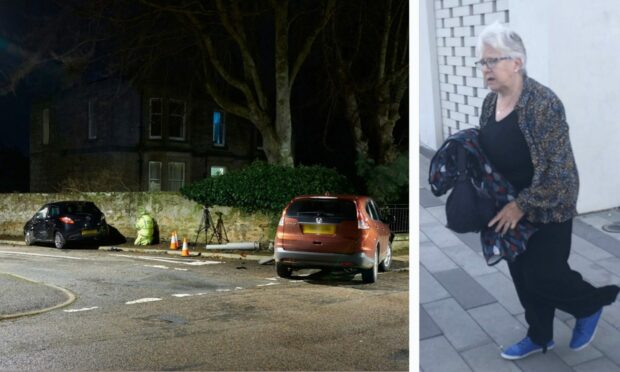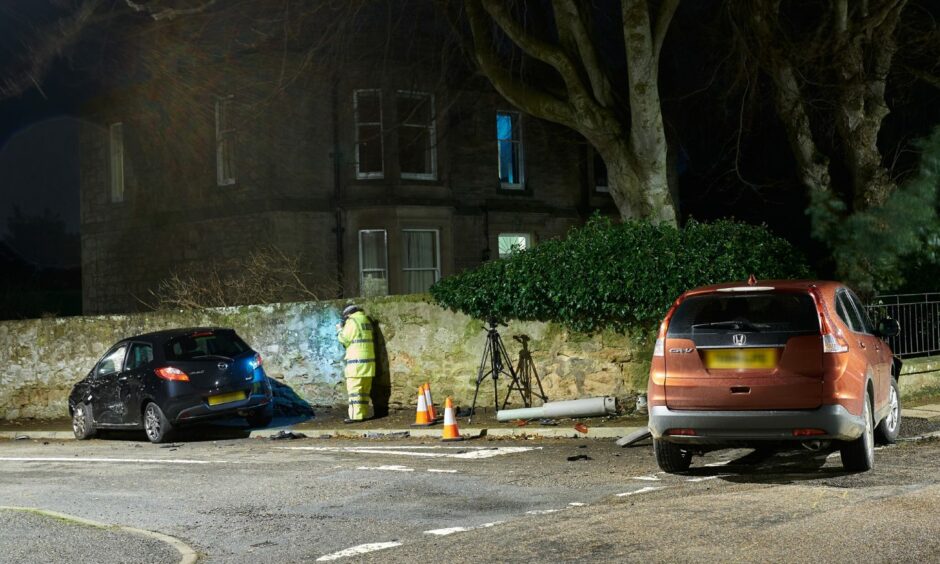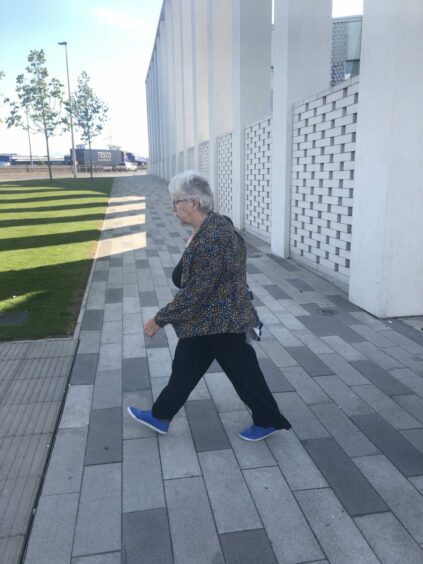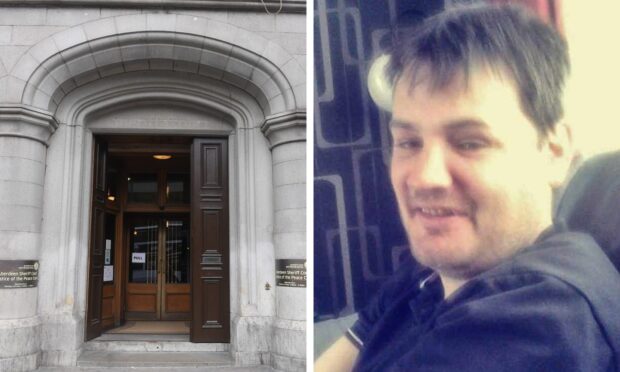An elderly driver has been cleared of killing a 91-year-old pedestrian in a horrifying two-car crash in Nairn.
Christina Cameron, 75, blacked out briefly before colliding with another vehicle and fatally striking James Alexander between Thurlow Road and Seafield Street on January 21, 2021.
Cameron, of the town’s Osprey Crescent, went on trial at Inverness Sheriff Court but was acquitted of the charge by a sheriff.
The court considered whether the accused lost consciousness as she negotiated the junction or if she hadn’t been paying attention.
But after hearing four days of evidence, Sheriff Ian Cruickshank found Miss Cameron not guilty.
OAP pedestrian died from spinal and pelvic injuries after Nairn car crash
The elderly woman had given evidence claiming she knew the route and the junction well and always turned left into Seafield Street.
But she could not explain why she travelled on to the extension of Thurlow Road and into the path of a Honda CRV.
The collision launched Cameron onto the pavement, where Mr Alexander was waiting to cross the road.
He died in hospital four days later after suffering spinal and pelvic injuries.
It was not disputed that Miss Cameron was at the wheel of her Mazda and caused Mr Alexander’s death.
A police collision expert decided that there was no braking before the collision and the damage to both vehicles and marks on the road indicated the Mazda was to blame.
Other witnesses on the street recalled Miss Cameron being in a daze, complaining of not knowing what happened and walking around in circles making no sense.
Fiscal depute Niall Macdonald called his own expert witness, consultant cardiologist Dr Stuart Hutcheon, who concluded that it was a “theoretical possibility” that Miss Cameron had suffered a syncopathic event (she fainted).
However, he said it was “highly unlikely” as there was a lack of previous history or symptoms.
He also disputed that a rapid change in temperatures for Miss Cameron going from a cold walk into a warm car would have resulted in a black-out or that she had been suffering from low blood pressure.
But defence counsel Ewan Dow’s expert – another consultant cardiologist – Professor Adrian Brady took the view that the environmental changes and her recorded low blood pressure from medication to treat high blood pressure could have caused Miss Cameron to faint.
He recalled other cases he had dealt with where there was no previous history of black-outs, no warning and immediate recovery.
Mr Dow said he had blacked out in his kitchen with no prior warning and then immediately recovered.
He also said the fact that the pain of Miss Cameron breaking her sternum in the crash could have brought her around to remember the aftermath but not the moments leading up to the tragedy.
However, he conceded that it was either syncope (fainting) – also known as a Transient Loss of Consciousness (TLOC) – or a lack of attention that caused the accident.
‘No blame should be attributed to Christina Cameron’
Sheriff Cruickshank, in his verdict, was unequivocal.
“It is clear that transient lack of consciousness is a complex field and the experts’ conclusions differ,” he said, adding: “Their opinion is there for my assistance.
“If she was returning to her home, she would have turned left into Seafield Street and not carry on to Thurlow Road, which would have been an illogical route.
“I applaud the other witnesses for their actions after the collision and they are to be commended.
“But they could not shed any light on what happened or her driving beforehand.”
The sheriff added: “Her behaviour afterwards may have been indicative of shock but also could have been due to a black-out.
“But I have concluded that it was not a theoretical possibility that she blacked out before the collision.
“It was an entire probability that she did and therefore no blame should be attributed to her for this. I find her not guilty.”
Miss Cameron and her accompanying friend both burst into tears upon hearing the judgement, telling the sheriff, Mr Dow and Mr Macdonald: “Thank-you”.
Outside court, both declined to comment about the case.
For all the latest court cases in Inverness as well as crime and breaking incidents, join our new Facebook group.












